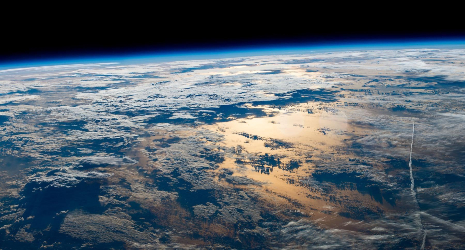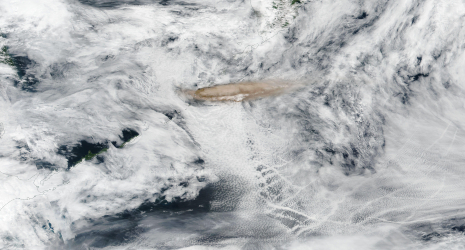.jpg)
Climatic impacts of black carbon aerosols over South-East Atlantic underestimated, research shows.

Pioneering new research has given a fresh insight into the crucial role that sea spray plays in climate change.

Role aerosols play in climate change unlocked by spectacular Icelandic volcanic eruption.
Prof Jim Haywood - Professor of Atmospheric Science [email]
Dr Daniel Partridge - Senior Lecturer in Atmospheric Science [email]
Aerosols, Clouds and Climate
About our research:
The focus of our research is atmospheric aerosols and their roles and impacts in climate. Atmospheric aerosols consist of microscopic particles suspended in the troposphere and stratosphere. They interact with both solar and terrestrial radiation (aerosol-radiation-interactions, ARI) and with clouds (aerosol-cloud-interactions, ACI). Aerosols can also play a key role in climate feedbacks.

Summer clouds over the Atlantic ocean as observed from space. Clouds cast shadows on the underlying ocean as seen in the centre of the photo. A contrail is visible on the right of the photo. Accurately representing such complex vertical and horizontal cloud structures in the grid boxes of current climate models is extremely challenging.
Image credit - Earth Science and Remote Sensing Unit, NASA Johnson Space Center (taken from the Horizon website).
Aerosol-Cloud-Climate interactions:
The interactions between aerosols, clouds and radiation are highlighted as the key climate uncertainties in the recent Intergovernmental Panel on Climate Change (IPCC) assessment report. ARI and ACI are both very uncertain. Whether aerosols cool or heat the atmosphere through ARI depends strongly on their absorption properties, but also upon their horizontal and vertical spatial distribution. Aerosol cooling through ACI is highly uncertain because of the challenge in representing complex aerosol and cloud microphysical interactions, many of which cannot be adequately represented in relatively coarse resolution global climate models.

MODIS TERRA real-colour image (22nd June 2019) of the ash cloud from the eruption of Raikoke volcano, as seen in the centre of the photo. Ship-tracks are also readily discernible as line-features of brighter cloud in the stratocumulus clouds in the SE quadrant of the image. Accurately parameterising interactions between aerosols and clouds climate models is extremely challenging.
Image credit - Cloud patterns south of the Aleutian Islands (taken from NASA Worldview).
Combining measurements with state-of-the-art models:
To improve our understanding of aerosols, clouds, and climate interactions, our studies involve airborne and surface-based in-situ measurements, retrievals of aerosol and cloud physical and optical properties from satellite instrumentation and numerical simulation across a range of scales by using process-scale models as well as regional and global meteorological and climate models.

